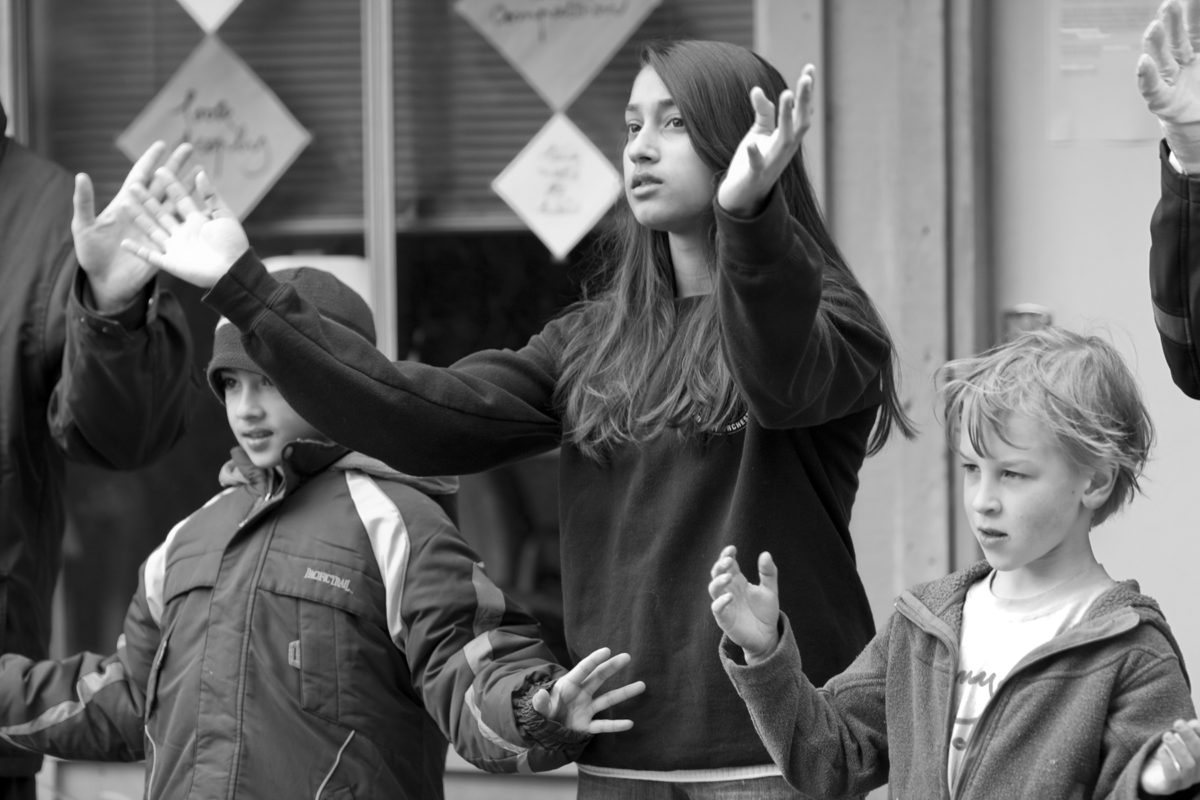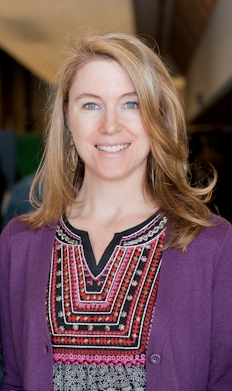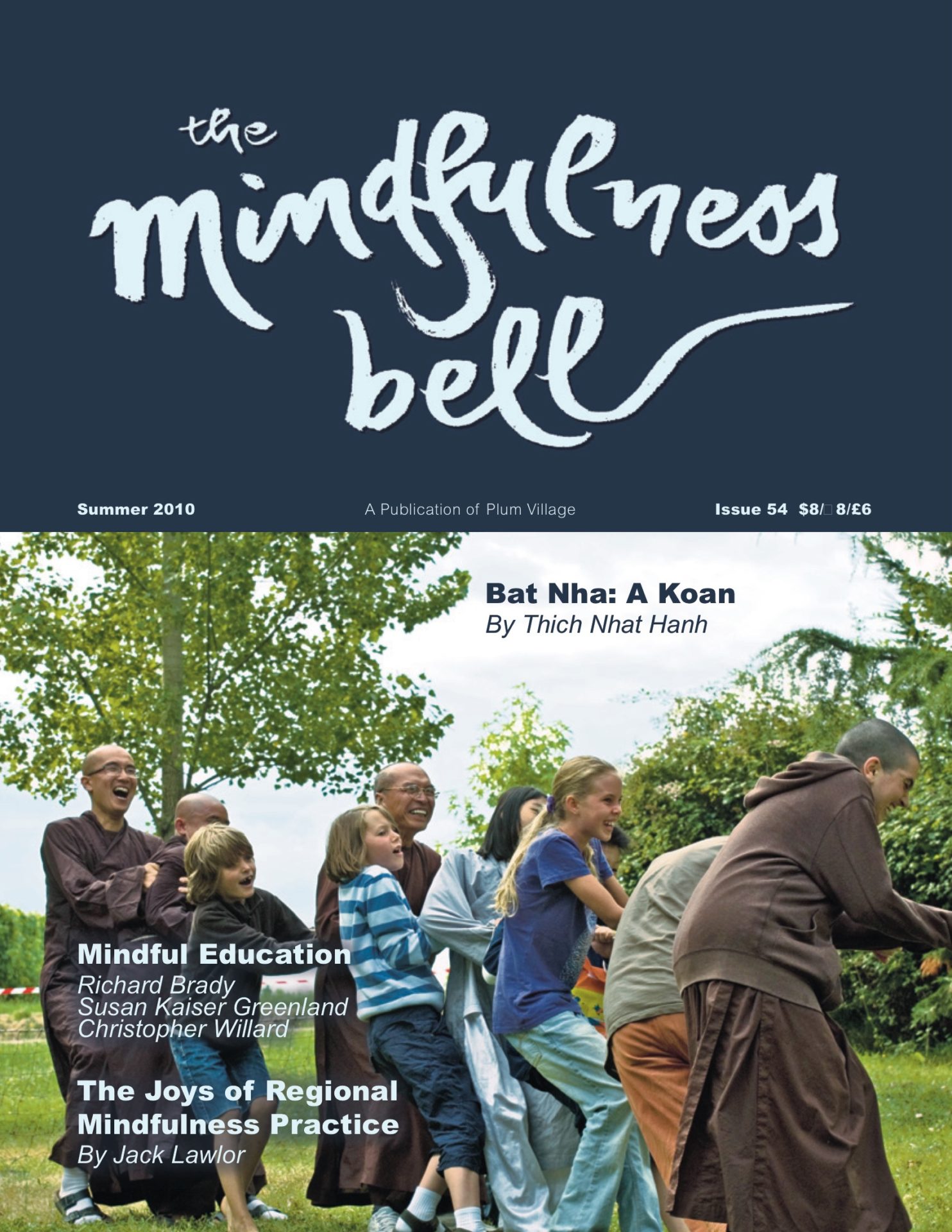By Shelley Murphy

Raymond skips through the door of our classroom. He is talking from the moment he arrives, providing a running commentary on everything he sees. Raymond has a hard time “making the thoughts in my head stop,” as he puts it. When we take our seats, his wide eyes fix on the Tibetan-like bells at the front of the class.
By Shelley Murphy

Raymond skips through the door of our classroom. He is talking from the moment he arrives, providing a running commentary on everything he sees. Raymond has a hard time “making the thoughts in my head stop,” as he puts it. When we take our seats, his wide eyes fix on the Tibetan-like bells at the front of the class. I can almost see the thoughts begin to slow in his mind. When I first introduced the bells to our class, eight-year-old Raymond had a thousand comments and questions: “Where are they from? What are they made of? Can I ring them? Are they a musical instrument? I play the recorder... what do you play?”
We are now months into the school year. Each day begins and ends with the chiming of the bells. I chime the bells a few times, and each student becomes increasingly more aware of his or her breathing. Raymond listens—and keeps listening until he can no longer hear the sound and vibration of the bells. His eyes are closed, his attention concentrated on his belly rising and falling and on his in-breath and out-breath. The thoughts that were monopolizing his attention appear to have receded to the periphery of his consciousness.
Raymond is learning to touch the silence and stillness within himself. He is learning that there is a place inside him where he can go when he’s overwhelmed by thoughts or when he’s feeling angry, sad, or upset. He is easily able to articulate what the ringing of the bells and breathing mean to him: “I feel relaxed and calm, and it helps when I have too many thoughts in my head at once.”
What if this kind of experience could be seamlessly woven into the elementary school day and children could be taught to notice their thoughts rather than be drawn into them? What if they could be taught to use their breath to find equanimity, to be more self-aware and less reactive, and to meet each moment with more attention and presence?
It is difficult to teach these kinds of life lessons if we haven’t authentically embraced the experiences ourselves. My own mindfulness practice began eight years ago. I had recently been diagnosed with a physically debilitating disease and was in search of something that might help my physical healing. Looking back now, I realize I was grasping for anything that might shield me from the sharp edges of pain and illness. Not long after the diagnosis, a friend of mine introduced me to a book by Thich Nhat Hanh called Peace Is Every Step. His teachings held transformative lessons for me and, to my surprise, they helped propel me toward an inner balance that included my pain and illness. His powerful poem, “Please Call Me by My True Names,” still resonates with me. One stanza reads:
My joy is like spring, so warm it makes flowers bloom all over the Earth.
My pain is like a river of tears, so vast it fills the four oceans.
Please call me by my true names,
so I can hear all my cries and laughter at once,
so I can see that my joy and pain are one.
Please call me by my true names,
so I can see that my joy and pain are one.
Through the teachings of Thich Nhat Hanh and others, including Pema Chodron and Jon Kabat-Zinn, I have learned to lean into all of life’s experiences. I have learned to use my breath to encounter and accept life in the present moment and to find equanimity. I am much less reactive and am better able to meet life’s daily challenges with calm, clarity, and perspective. As a teacher and teacher educator, I embody these experiences, and I am better able to share them with students like Raymond.
Raymond gradually became comfortable with his mindfulness practice. He looked forward to it and expected it to be part of his day. He learned that he didn’t have to react to every thought that came into his mind. He, his mother, and I noticed his newfound ability to tap into deeper states of concentration. He was less restless and more easily able to deal with classroom stimulation and distraction. He was more at peace.
I imagine Raymond continuing to learn how to live in the present moment, to respond consciously in the world instead of reacting automatically, and to focus without being distracted by the chatter of continuous thoughts. Our schools are fertile grounds for seeds of mindfulness. If we offer these lessons to our children, we will, in some measure, better prepare them for each moment of their unpredictable, joyous, painful, confusing, beautiful, everyday lives, both in school and in the world beyond.

Shelley Murphy is completing her doctorate in Curriculum, Teaching, and Learning at the University of Toronto. A former inner city elementary teacher, she is currently a teacher educator.

